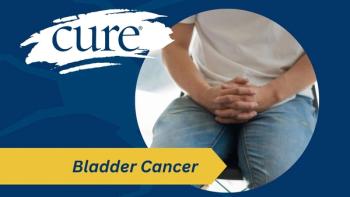
Metastatic Breast Cancer Creates High Economic Burden Through Lost Productivity
“This study has highlighted the potential benefit of supportive resources to help women with (metastatic breast cancer) guard against potentially severe cancer-related financial losses for themselves and others within their households,” the authors wrote.
Metastatic breast cancer creates a high economic burden, especially among women aged 45years to 64 years, through lost productivity, according to results of a productivity cost analysis published in Cancer.
“(Metastatic breast cancer) can lead to a substantial economic burden through lost productivity in two ways,” the authors wrote. “First, women with (metastatic breast cancer) can miss productive days at work and home due to illness, either as a direct result of their (disease) or due to the side effects of treatment. Second, premature mortality from (metastatic breast cancer) creates years of potential life lost (YPLL) for women.
To estimate productivity costs due to metastatic breast cancer (mBC) via lost productive time among survivors and YPLL from premature death, the researchers analyzed data from the 2000 to 2016 National Health Interview Study.
Survivors of, and patients with, mBC were separated into three age groups for analysis: younger (18-44 years old), midlife (45-64 years old) and older (greater than 65 years old) women.
Researchers looked at the estimated number of work and home productivity days that women missed due to their mBC treatment and found the cost of these missed days ranged from $680 for older women to $5,169 for younger women. Using 2015 National Vital Statistics System data, the value of lost work and home productivity was $67 million for younger women, $246 million for midlife women and $66 million for older women.
“We found that mBC was associated with $18.2 billion in lost productivity from these two avenues nationally in 2015,” the authors wrote. “The majority of those costs (98% = $17.8 (billion)/$18.2 (billion) were due to premature mortality due to high mortality rates for mBC and the relatively short survival noted once the disease is metastatic.”
Compared with women without a history of breast cancer, women with a history of breast cancer were more likely to miss any work days, except among older women, and productive days at home.,
Among those with a history of breast cancer, younger women were found to have missed a higher average of any work (27.6 days vs. 8 days) or productive days at home(25.4 days vs. 9.5 days). Moreover, among younger women compared to the non-breast cancer group the estimates for lost days remained higher through five years after diagnosis. For women in the 45 to 64-year age range, more productive days lost from breast cancer was within the first two years of diagnosis.
“We attempted to be conservative in our estimate of lost work time associated with mBC by using the average time lost across all stages of disease in the first two years,” the authors wrote when explaining their analysis. “There is evidence that mBC is associated with higher productivity loss than earlier stage disease.”
In 2015, the estimated number of deaths from mBC was highest among older women (24,991 deaths) compared with younger women (2,207 deaths). Women in the midlife category had an estimated number of 14,315 deaths from mBC in 2015 but had the highest number of combined YPLL at 403,786 life-years. Midlife women also had the highest value of home production lost due to premature mortality estimated at a cost of $6.1 billion. In contrast, younger women with mBC had a higher market value of YPLL at $1.6 billion compared to $527 million for older women, despite younger women experiencing less than one-tenth of the deaths older women experienced.
“Given that working women experience some of the greatest economic losses associated with cancer and frequently are sources of economic support for dependents living in the house hold, this study has highlighted the potential benefit of supportive resources to help women with mBC guard against potentially severe cancer-related financial losses for themselves and others within their households,” the authors wrote.
The authors also noted that these results provide relevant data for future studies regarding the cost-effectiveness of preventive and therapeutic interventions that could both extend a patient’s survival and improve their quality of life.
“Future studies examining the value of new interventions for specific breast cancer subtypes that disproportionately affect women of different ages can use these results to model age‐specific improvements in productivity,” the authors concluded.





